10 Symbols of Spain and Their Meaning
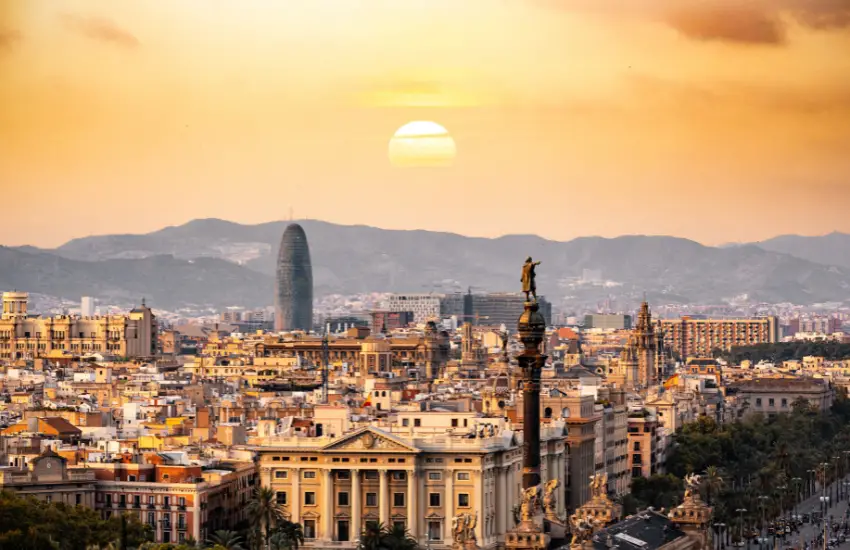
Are you interested in the symbols of Spain and their meaning? Spain is a country rich in history and culture, and it’s no surprise that it has several symbols that hold significant meaning. From the iconic flamenco dancer to the famous matador, these symbols represent the diverse traditions and heritage of Spain.
In this article, we will explore 10 symbols of Spain and delve into their significance. Whether you’re planning a trip to Spain or simply want to learn more about its culture, join us on this journey to discover the fascinating meanings behind these symbols.
Flamenco

Flamenco is a traditional Spanish art form that combines music, dance, and singing. Originating from the Andalusian region of Spain, flamenco is known for its passionate and expressive performances. It is deeply rooted in the history and culture of Spain and has become a symbol of Spanish identity.
Flamenco music is characterized by its distinctive rhythms and melodies, often accompanied by the flamenco guitar. The dance is known for its intricate footwork and expressive movements, conveying a range of emotions such as joy, sorrow, and longing. The singing, known as cante, is powerful and soulful, reflecting the deep emotions inherent in flamenco.
Throughout history, flamenco has evolved and incorporated influences from various cultures, including Arabic, Jewish, and Romani (Gypsy) traditions. It has gained international recognition and is often performed in theaters and festivals around the world.
Bullfighting
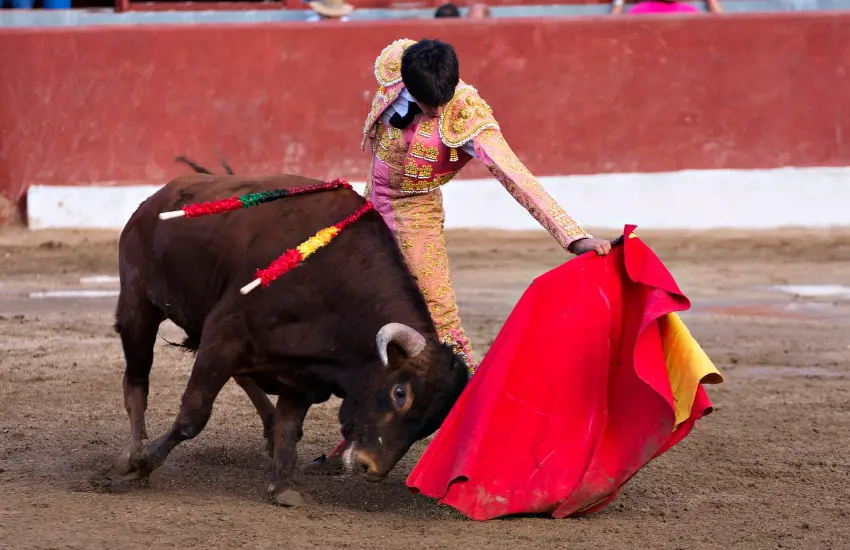
Bullfighting, also known as corrida de toros, is a traditional Spanish spectacle that has its roots in ancient rituals and traditions. Despite its controversial nature, bullfighting holds a significant place in Spanish culture and is considered an important symbol of Spain.
The origins of bullfighting can be traced back to Roman times, but it reached its peak during the medieval period when it became popular among the Spanish nobility. Today, bullfighting is primarily associated with the regions of Andalusia and Madrid, where it attracts both locals and tourists alike.
A typical bullfight consists of three stages known as tercios. The first stage, called the tercio de varas, involves the bullfighter using a lance to weaken the bull and fatigue it. In the second stage, called the tercio de banderillas, the bullfighter uses colorful barbed sticks, called banderillas, to further provoke the bull. Finally, in the third stage, known as the tercio de muerte, the bullfighter attempts to kill the bull with a sword.
Bullfighting is often seen as a contest between man and beast, with the bullfighter showcasing their bravery, skill, and artistry. However, it has been a topic of debate and controversy due to concerns about animal cruelty. Opponents argue that the nature of bullfighting, including the physical harm inflicted on the bull, goes against modern animal welfare principles.
Despite the controversy, bullfighting continues to be a prominent cultural event in Spain, attracting thousands of spectators each year. It is considered an integral part of Spanish heritage and represents the country’s history, traditions, and values. However, the practice has faced increasing criticism and calls for its abolition in recent years, leading to ongoing discussions about the future of bullfighting in Spain.
La Tomatina
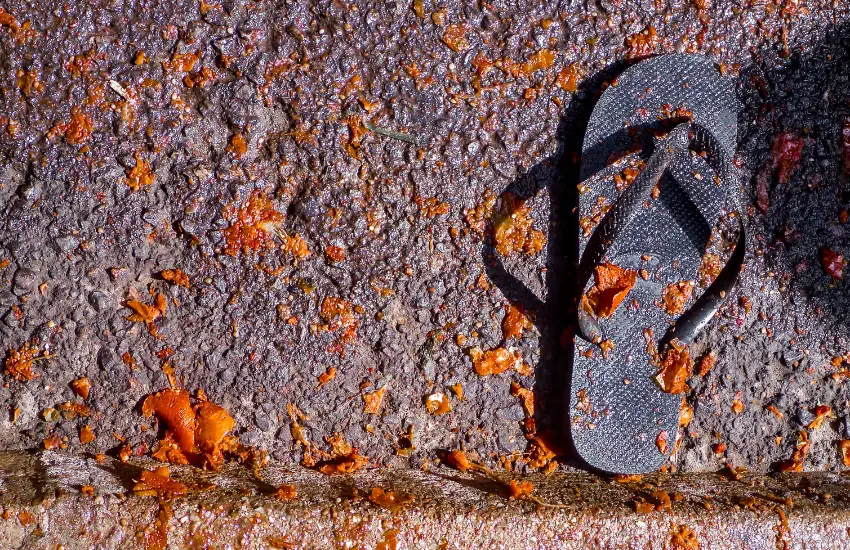
La Tomatina is a famous festival that takes place in the town of Buñol, Spain. It is an event where participants engage in a massive tomato fight, throwing tomatoes at each other in a friendly and festive atmosphere. La Tomatina is held on the last Wednesday of August and attracts thousands of visitors from all over the world.
The origins of La Tomatina are believed to date back to 1945 when a group of young people started a tomato fight during a parade. The tradition continued in the following years, and eventually, it became an official festival in the 1950s. Today, La Tomatina is recognized as one of the most unique and thrilling festivals in Spain.
During La Tomatina, participants gather in the main square of Buñol and wait for the signal to start the tomato fight. Trucks loaded with ripe tomatoes arrive, and the crowd eagerly grabs handfuls of tomatoes to throw at each other. The streets are quickly filled with squished tomatoes, creating a vibrant red scene. The tomato fight lasts for about one hour, after which the streets are cleaned with water hoses.
La Tomatina is not only a fun and exciting event but also a symbol of community and camaraderie. It brings people together to celebrate and enjoy a unique experience. The festival has gained international recognition and has become a highlight of Spain’s cultural heritage.
Sagrada Familia
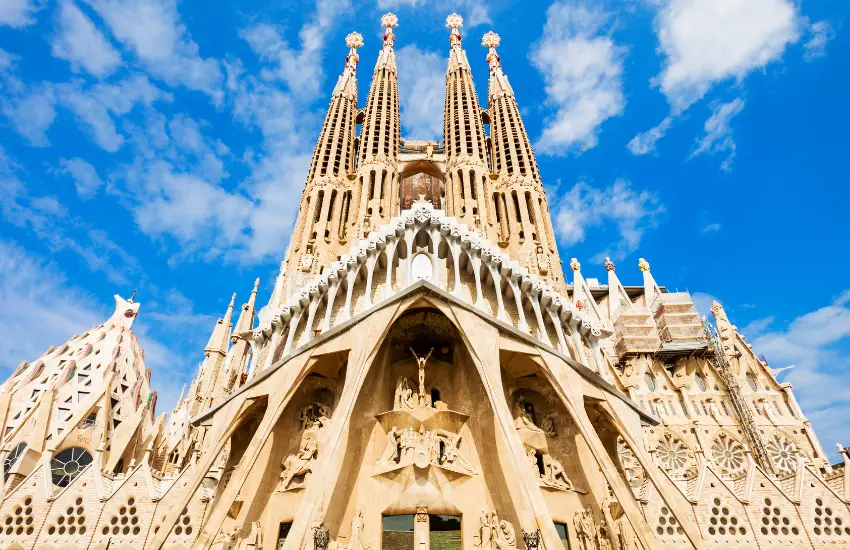
One of the most iconic symbols of Spain is the Sagrada Familia. Located in Barcelona, this magnificent basilica is renowned for its unique and awe-inspiring architecture. Designed by the famous architect Antoni Gaudí, the Sagrada Familia is a UNESCO World Heritage Site and attracts millions of visitors each year.
Construction of the Sagrada Familia began in 1882 and is still ongoing to this day. Gaudí dedicated over 40 years of his life to the project and left behind a legacy that continues to amaze and inspire. The basilica combines various architectural styles, including Gothic and Art Nouveau, and is characterized by its intricate facades, towering spires, and vibrant stained glass windows.
The Sagrada Familia is not only a stunning architectural masterpiece but also carries symbolic meaning. The basilica’s design reflects Gaudí’s strong religious beliefs and his desire to create a space that would inspire spiritual reflection. The intricate details and symbolism found throughout the basilica’s interior and exterior tell the story of the Catholic faith, with elements representing the life of Jesus, the Holy Family, and various biblical scenes.
Key Features of the Sagrada Familia
The Sagrada Familia is known for several key features that make it truly unique:
- Nativity Facade: This facade depicts the birth of Jesus and is adorned with intricate sculpture work.
- Passion Facade: Representing the crucifixion and resurrection of Jesus, this facade is characterized by its sharp angles and stark design.
- Glory Facade: The main entrance of the basilica, this facade is still under construction and will be the grandest of the three when completed.
- Spire of the Virgin Mary: Topping one of the basilica’s spires, this sculpture of the Virgin Mary stands as a symbol of devotion and protection.
- Nave and Columns: The interior of the Sagrada Familia features towering columns that resemble trees, creating a forest-like atmosphere and supporting the expansive vaulted ceiling.
- Stained Glass Windows: The basilica is renowned for its breathtaking stained glass windows, which flood the interior with vibrant colors and create a captivating play of light.
The completion of the Sagrada Familia is projected for the early 2030s, marking the 150th anniversary of Antoni Gaudí’s birth. Despite the lengthy construction process, the basilica continues to captivate visitors with its beauty, symbolism, and ongoing transformation. The Sagrada Familia stands as a testament to the dedication and vision of both Gaudí and the artisans who have worked on the project throughout the years.
To learn more about the Sagrada Familia and plan your visit, you can refer to the official website of the basilica: https://sagradafamilia.org/en/home.
Toro Osborne
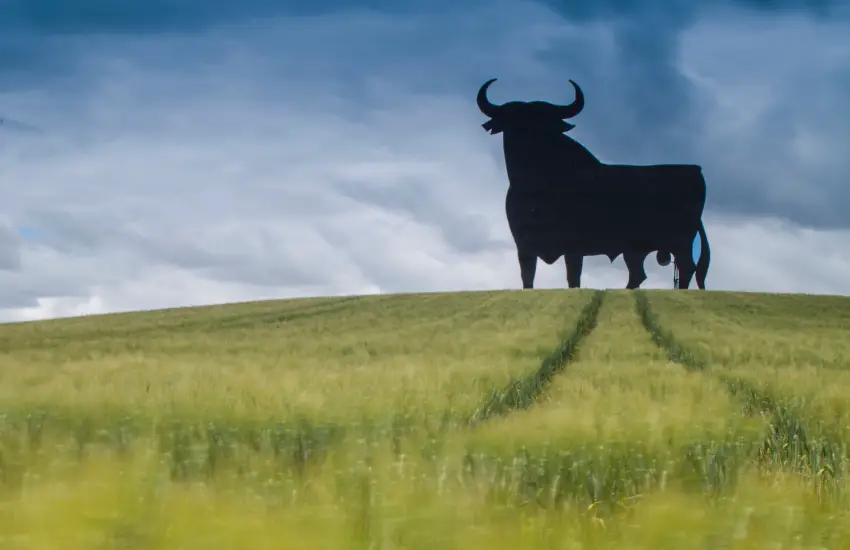
The Toro Osborne, also known as the Osborne bull, is one of the most iconic symbols of Spain. It is a large black silhouette of a bull that can be seen across the Spanish countryside. The image of the bull was created in 1956 as an advertisement for the Osborne sherry company but soon became a beloved symbol of Spanish culture and identity.
The Toro Osborne represents the strength, power, and determination that are often associated with the bull in Spanish culture. It has become a recognizable landmark and a symbol of pride for many Spaniards. The image of the bull can be found on various products, such as keychains, postcards, and souvenirs, and has become a popular tourist attraction.
In recent years, there have been debates about the legality and preservation of the Osborne bulls. Due to road safety regulations, many of the original roadside billboards featuring the bull silhouette have been removed. However, some bulls have been given protected status as cultural heritage, and efforts have been made to preserve and maintain them.
The Toro Osborne is not only a symbol of Spain but also represents the strong connection between Spanish culture and the bullfighting tradition. Bulls have long been associated with bullfighting, a controversial and highly debated sport in Spain. The imagery of the bull embodies the passion, bravery, and cultural significance of this tradition.
The Toro Osborne serves as a reminder of the rich history and heritage of Spain, and its presence continues to evoke national pride and identity. Whether displayed on a roadside billboard or seen on various products and merchandise, the Toro Osborne is a symbol that embodies the spirit of Spain and its cultural traditions.
Mosaic of Park Güell
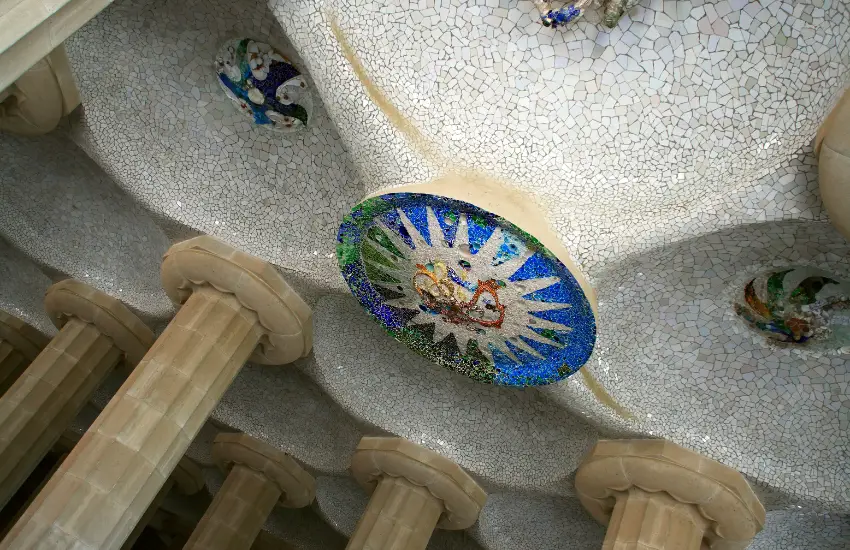
The Mosaic of Park Güell is a renowned architectural masterpiece located in Barcelona, Spain. Designed by the renowned architect Antoni Gaudí, this colorful and intricate mosaic is a testament to his unique artistic vision and is considered one of the most iconic symbols of Spain. The mosaic can be found throughout the park, covering various structures and elements, and adds a vibrant and whimsical touch to the architectural landscape.
Gaudí’s use of mosaic in Park Güell showcases his unparalleled creativity and attention to detail. The mosaic is composed of carefully arranged pieces of colorful tiles and broken ceramic fragments, forming intricate patterns and designs. The combination of different colors and textures creates a visually stunning effect, capturing the essence of Gaudí’s distinctive style.
The Mosaic of Park Güell also represents Gaudí’s close connection to nature. The mosaic incorporates natural motifs, such as flowers, plants, and animals, reflecting the beauty and diversity of the surrounding environment. The use of organic shapes and forms in the mosaic adds a sense of harmony and integration with the natural world.
Aside from its aesthetic appeal, the mosaic also serves a functional purpose in Park Güell. It provides a weatherproof and durable surface on structures, protecting them from the elements and ensuring their longevity. The mosaic also contributes to the overall ambience of the park, creating a joyful and whimsical atmosphere for visitors to enjoy.
Today, the Mosaic of Park Güell continues to attract tourists from around the world who admire Gaudí’s genius and appreciate the unique beauty of this architectural gem. It is a symbol not only of Spain’s rich artistic heritage but also of Gaudí’s profound influence on modern architecture. A visit to Park Güell offers the opportunity to immerse oneself in the vibrant colors and intricate designs of the mosaic, experiencing firsthand the magic of Gaudí’s vision.
Running of the Bulls
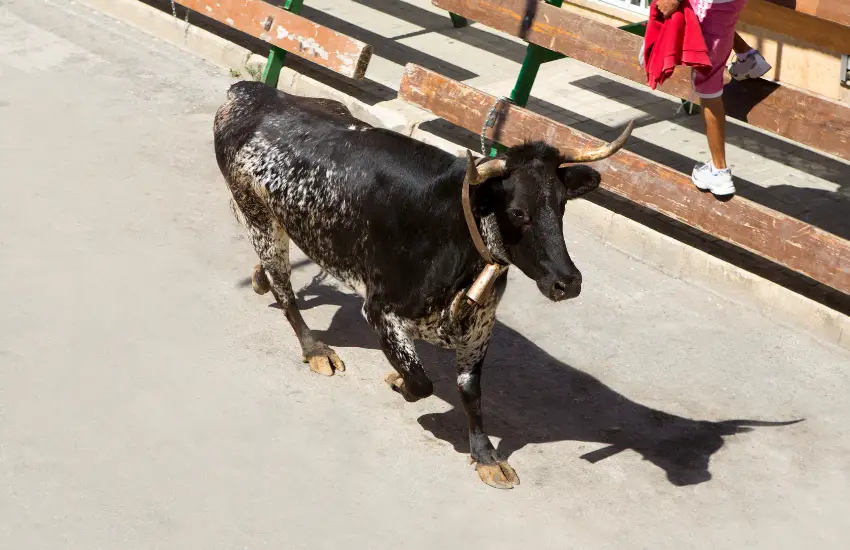
The Running of the Bulls, or “Encierro” in Spanish, is a traditional event that takes place in the city of Pamplona, Spain, during the annual San Fermín festival. The event involves running in front of a group of bulls that are let loose in the streets of the city. While the Running of the Bulls has become known worldwide for its excitement and adrenaline, it is important to note the risks and potential dangers associated with this event.
The origins of the Running of the Bulls date back to the 13th century when bull runs were used as a method of transporting bulls from outside the city to the bullring. Over time, the event evolved into a tradition and became an integral part of the San Fermín festival. Today, thousands of participants from around the world gather to take part in the Running of the Bulls, seeking the thrill and excitement of running alongside the charging bulls.
However, it is crucial to acknowledge the risks involved in this event. Running with the bulls requires physical stamina, agility, and a clear understanding of the rules and safety guidelines. The bulls can reach speeds of up to 35 miles per hour, making it a dangerous pursuit for those who are not adequately prepared. Participants must be cautious, avoid any risky behavior, and follow the instructions provided by the event organizers to ensure their safety and the safety of others.
It is also important to note that the Running of the Bulls has faced controversy and criticism from animal rights organizations. They argue that the event causes unnecessary stress and harm to the bulls. While steps have been taken to ensure the welfare of the animals during the event, it remains a contentious issue.
If you are interested in witnessing or participating in the Running of the Bulls, it is essential to educate yourself about the event and its potential risks. By doing so, you can make an informed decision and take appropriate precautions to ensure a safe experience.
Paella
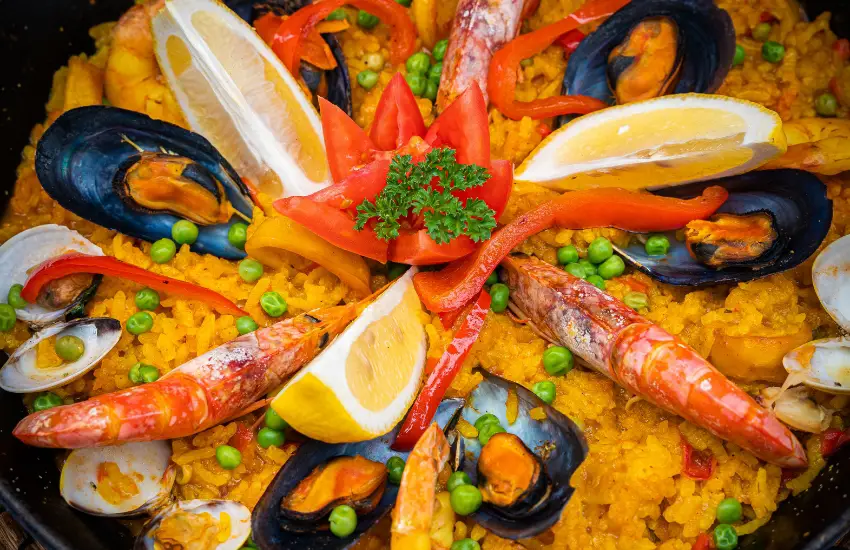
One of Spain’s most famous and beloved dishes is paella. This iconic rice dish originated in the Valencia region of Spain and has become a national symbol of Spanish cuisine. Paella is known for its vibrant colors, rich flavors, and combination of ingredients that come together to create a delicious and satisfying meal.
Traditionally, paella is cooked in a large, shallow pan called a paellera. The base of the dish is rice, which is cooked with saffron and a variety of vegetables, meats, and seafood. The most common ingredients include chicken, rabbit, snails, green beans, tomatoes, garlic, and olive oil. However, there are many regional variations of paella, each with its own unique combination of ingredients.
One of the key elements of paella is the socarrat, a caramelized layer of rice that forms on the bottom of the pan. This crispy and flavorful crust is highly prized and adds a delicious textural element to the dish. To achieve the socarrat, the rice is cooked over a low flame and the bottom is allowed to brown slightly.
Paella is often enjoyed as a communal dish, with family and friends gathering around a large pan to share the meal. It is typically served directly from the pan and eaten with a spoon. Paella is a versatile dish that can be adapted to suit different tastes and dietary preferences. Vegetarian and seafood versions are popular alternatives to the traditional meat-based paella.
When visiting Spain, trying authentic paella is a must. Whether enjoyed at a traditional restaurant or as part of a festive gathering, paella is a symbol of Spanish culture and cuisine that will delight your taste buds and leave you with a lasting culinary memory.
Prado Museum
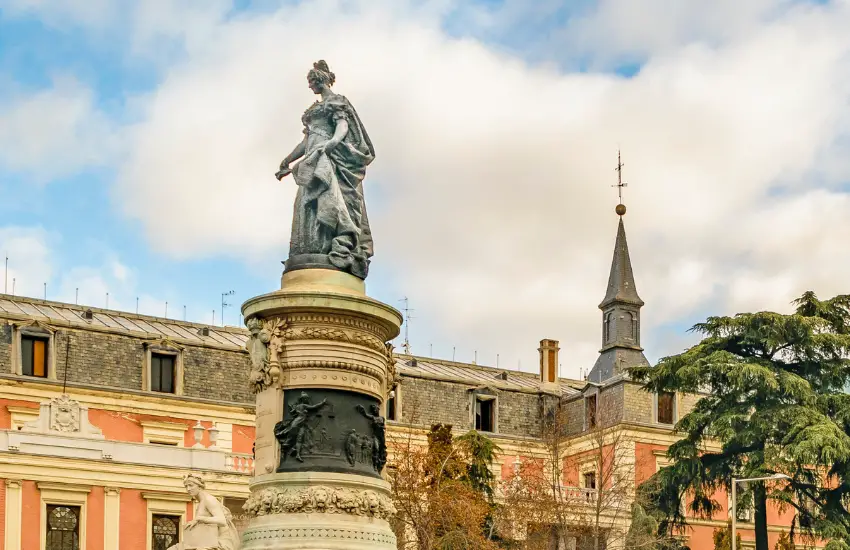
The Prado Museum, located in Madrid, Spain, is one of the most renowned art museums in the world. It houses an extensive collection of European paintings, sculptures, and other forms of art, covering a wide range of artistic periods. The museum is known for its impressive collection of Spanish art, including works by some of the country’s most celebrated artists, such as Francisco Goya, Diego Velázquez, and El Greco.
The Prado Museum was established in 1819 and has since grown to become a cultural institution of great importance. Its collection spans from the 12th to the 21st century, showcasing masterpieces from various artistic movements, such as the Renaissance, Baroque, and Romanticism. Visitors can admire iconic works like Velázquez’s “Las Meninas,” Goya’s “The Third of May 1808,” and Bosch’s “The Garden of Earthly Delights.”
In addition to Spanish art, the Prado Museum also features a significant number of artworks from other European countries, including Italy, Germany, and the Netherlands. Visitors can explore masterpieces by renowned artists like Titian, Caravaggio, Rembrandt, and Rubens, among many others.
The Prado Museum’s collection is constantly expanding through acquisitions and donations. The museum hosts temporary exhibitions that provide visitors with the opportunity to appreciate different art forms and explore new artistic perspectives.
Visiting the Prado Museum is a must for art enthusiasts and culture seekers. It offers a fascinating journey through the history of art, allowing visitors to appreciate the incredible talent and creativity of artists from different periods and regions. Whether you are a fan of Spanish art or interested in European masterpieces in general, the Prado Museum is a treasure trove of artistic riches.
Alhambra

The Alhambra is a magnificent palace and fortress complex located in Granada, Spain. It is one of the most famous and visited landmarks in the country, attracting millions of tourists each year. The Alhambra is a UNESCO World Heritage site and a symbol of the rich Islamic heritage of Spain.
Constructed during the Nasrid Dynasty in the 14th century, the Alhambra is renowned for its stunning architecture, intricate details, and beautiful gardens. The complex combines Islamic art and architecture with elements of Renaissance and Gothic styles. It encompasses several palaces, courtyards, gardens, and defensive structures, including the Generalife Gardens, the Alcazaba fortress, and the Nasrid Palaces.
The Alhambra reflects the sophisticated and intricate design principles of Islamic architecture. It features geometric patterns, arabesques, calligraphy, and muqarnas, a type of decorative vaulting. The use of water is also prominent in the Alhambra, with numerous fountains, pools, and channels throughout the complex, creating a peaceful and refreshing ambiance.
Visiting the Alhambra allows one to immerse themselves in the rich history and cultural heritage of Spain. The intricate designs and beautiful surroundings make it a truly captivating destination. It is advisable to book tickets in advance due to the high demand, especially during peak tourist seasons. Exploring the Alhambra and its various sections, such as the stunning Nasrid Palaces and the Generalife Gardens, is a memorable experience that highlights the architectural and artistic brilliance of the Islamic civilization in Spain.
If you have the chance to visit the Alhambra, take your time to fully appreciate its beauty and immerse yourself in the history and cultural significance it represents. Exploring the various palaces, gardens, and structures allows you to step back in time and witness the enchanting legacy of the Moorish rule in Spain.
Conclusion
These 10 symbols of Spain represent the rich culture and heritage of the country. From the passionate and energetic art form of Flamenco to the iconic landmarks like the Sagrada Familia and Alhambra, each symbol tells a unique story. Whether it’s the thrilling Running of the Bulls or the mouthwatering dish of Paella, these symbols give us a glimpse into the diverse traditions and customs of Spain.
As you explore the vibrant streets of Spain, be sure to immerse yourself in these symbols and embrace the spirit of the country. Whether you’re admiring the intricate mosaics of Park Güell or marveling at the masterpieces in the Prado Museum, you’ll be surrounded by the rich history and artistic brilliance that define Spain. Soak in the beauty and significance of these symbols, and let them create lasting memories of your time in this captivating country.